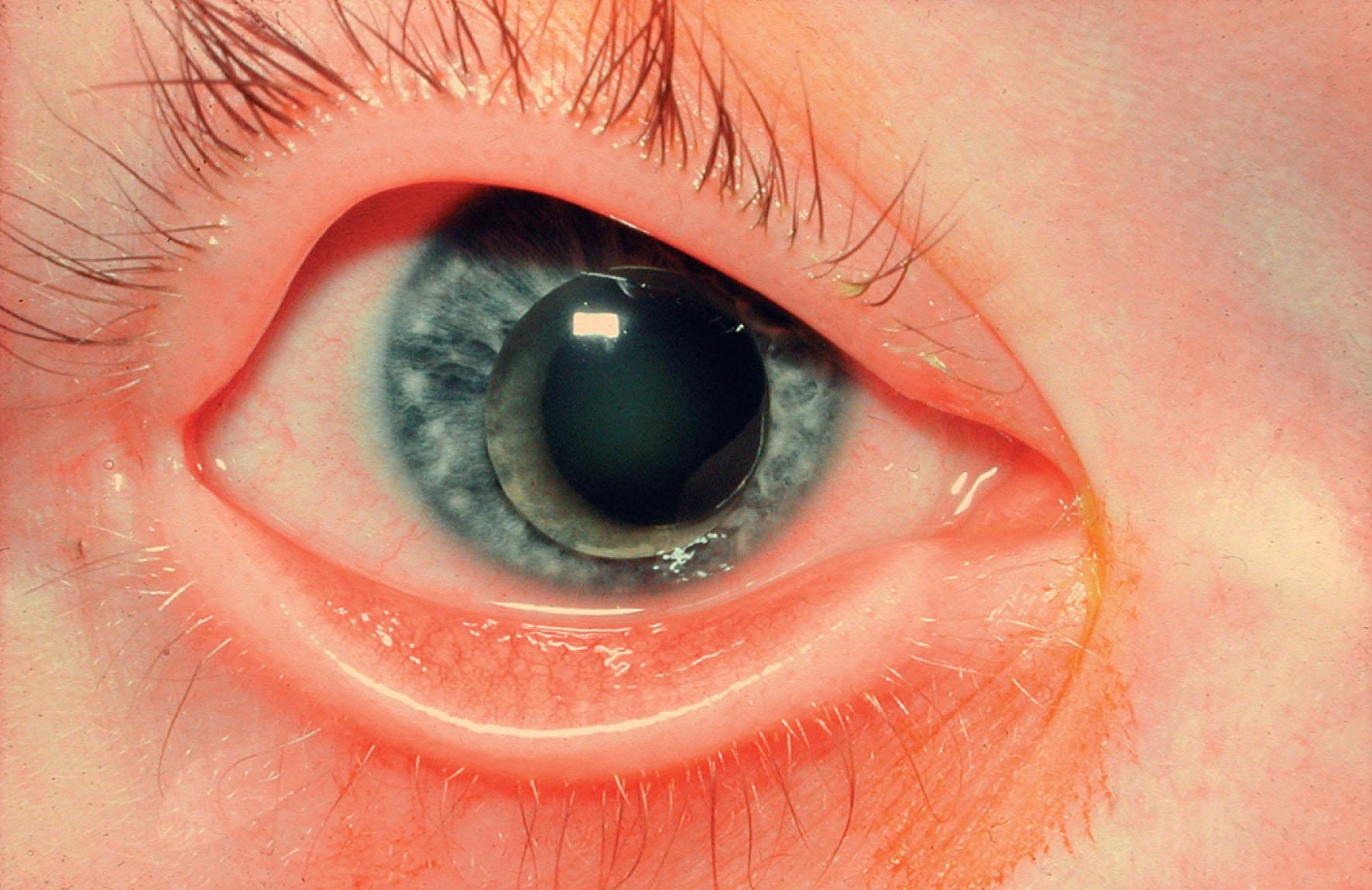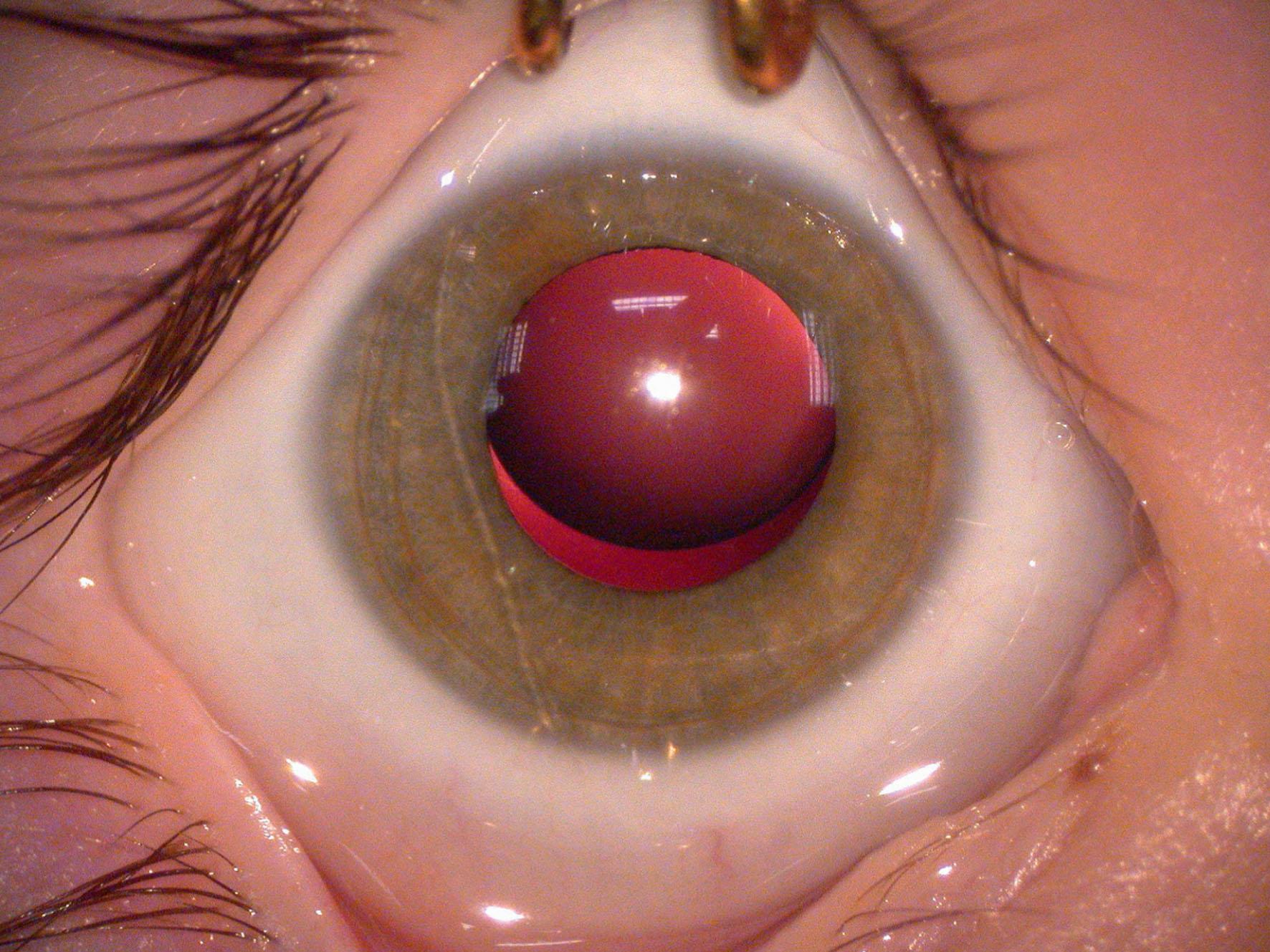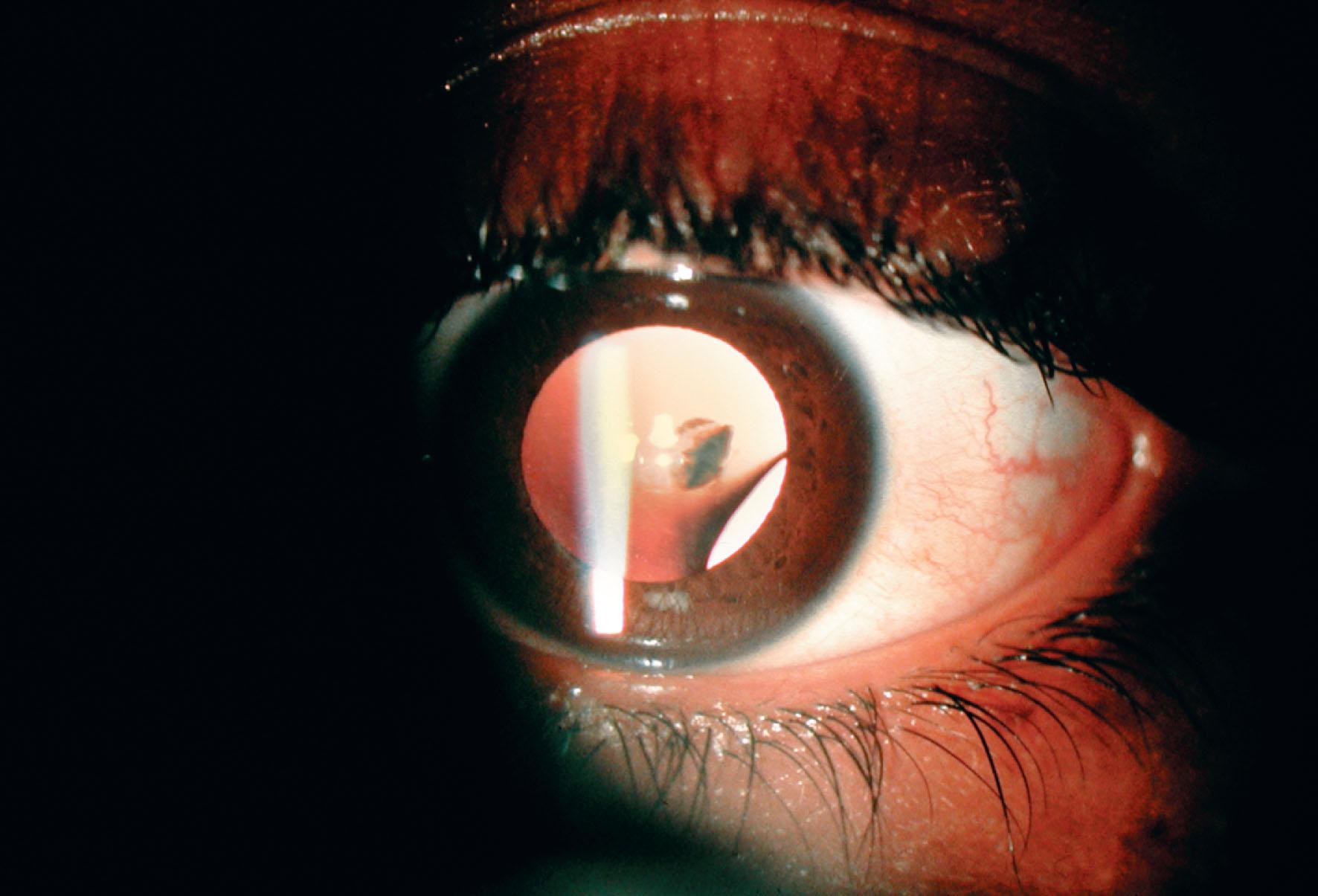Physical Address
304 North Cardinal St.
Dorchester Center, MA 02124
![]() For video accompanying this chapter see ExpertConsult.com. See inside cover for access details.
For video accompanying this chapter see ExpertConsult.com. See inside cover for access details.
The crystalline lens, like the cornea, has two principal optical properties: transparency and refractive power. Its structure reflects this. It is a transparent, biconvex, avascular mass of uniquely differentiated epithelial cells. It lies immediately posterior to the iris and is held in position behind the pupil by zonular fibers from the ciliary body.
The lens has an equatorial diameter of 6.5 mm at birth and a maximum anteroposterior thickness of 3.5 mm at the poles. It is completely enveloped by a collagenous capsule, the basement membrane of the cuboidal epithelial cells, which lie beneath it in a single layer. The cuboidal cells at the equatorial region of the lens develop throughout life to form spindle-shaped secondary lens fibers. This addition of fibers at the equatorial region slowly changes the morphology of the lens from a near spherical fetal shape, to an elliptical biconvex shape (with a diameter of approximately 9 mm and an anteroposterior depth of 5 mm) in childhood and early adulthood. The embryonic and fetal nuclei are present at birth. The fetal nucleus is demarcated from the embryonic nucleus by Y-shaped upright sutures anteriorly and inverted Y-shaped sutures posteriorly. Successive nuclear zones are laid down during development and those deposited after birth contribute to the adult nucleus. The surrounding cortex is formed from less densely packed lens fibers.
The lens develops as a thickening of the surface ectoderm overlying the optic vesicle. This “lens placoid” appears on day 26–27 in the human embryo. The mitotically active surface ectoderm is fixed in place, resulting in cell crowding, elongation, and thickening of the placoid. Adhesion of the optic vesicle to the lens placoid ensures eventual alignment of the lens and retina in the visual axis. However, there is no direct cellular contact between the basement membranes of the optic vesicle and surface ectoderm. The lens placoid then invaginates to form the lens pit. This becomes the lens vesicle. Lens vesicle detachment is the initial event leading to formation of the anterior segment of the eye (day 33). It is accompanied by migration of epithelial cells via a keratolenticular stalk, cellular necrosis, and basement membrane breakdown. This partially explains the common association of major or minor anterior segment developmental abnormalities (see Chapter 32 ) in children with lens disorders. The detached lens vesicle is lined by a single layer of columnar epithelial cells surrounded by a basal lamina, the future lens capsule. Primary lens fiber formation occurs in the epithelial cells lining the posterior surface of the lens vesicle and is promoted by the adjacent retinal primordium. The primary lens fibers fill the lumen of the lens vesicle. Elongation of lens cells adjacent to the retina forms the embryonal lens nucleus. The anterior lens cells nearest the corneal primordium remain a cuboidal monolayer and become the lens epithelium. This remains mitotically active for life, providing future lens fiber cells. Epithelial cells differentiate into secondary lens fibers at the lens equator (lens bow). These fibers elongate both anteriorly and posteriorly and insert over the primary lens fibers. They are thickest at the equator. Secondary lens fibers meet anteriorly and posteriorly at the Y sutures.
Zonular fibers are derived from the non-pigmented ciliary epithelium during the fifth month of gestation. The glycoprotein fibrillin is the main component of the ciliary zonules. There are two well-studied isoforms (FBN1 and FBN2) and the more recently discovered FBN3 isoform which is unique to humans. The monomers are long, flexible molecules which form extended polymers and form the backbone of microfibrils which are important scaffolding structures and are arranged in parallel bundles to form the lens zonules. Fibrillin isoforms interact with many related proteins including the TGFβ complex, elastin, and the ADAMTS-like proteins and are involved in TGFβ and BMP signaling. Interestingly, all isoforms are present in the eye during human embryonic development but fibrillin-1 predominates in the post-natal zonule suggesting that fibrillin-2 and 3 play an early scaffolding role for ocular development.
Disorders affecting the structure or function of these interacting proteins result in zonular dysfunction, in particular ectopia lentis, and are discussed below.
The tunica vasculosa lentis (TVL) is a vascular network derived from the hyaloid artery posteriorly and a parallel radial palisade of anastomoses with the annular blood vessel laterally. It envelops the developing lens and nourishes it at a time when aqueous production and formation of the anterior chamber have not yet begun. This intraocular network of vessels begins development in the first month of gestation, is maximal in the second to third month, and begins to regress by the fourth month. It has largely disappeared at birth. Persistent TVL is commonly seen in premature neonates and failure of regression of the TVL, hyaloid arteries and anterior structures can cause a range of developmental anomalies collectively termed persistent fetal vasculature (PFV).
Abnormalities of lens development are most often seen in the context of more global developmental abnormalities of the eye and rarely as true isolated phenomena. Most of the known causes affect multiple aspects of ocular development, including, for example, genes with multiple, overlapping roles in ocular development. Since the advent of broad gene panels and their availability in the clinical setting, many disorders of lens development (especially when they occur with other abnormalities of ocular development or systemic features) are diagnosed through genetic testing. Identifying the ocular and systemic phenotype in detail are still key to diagnosis however, in terms of selecting the most appropriate panel of genes to screen and interpreting the resulting genetic findings.
Developmental abnormalities of the lens broadly comprise: absence of the lens (aphakia), duplication of the lens, and anomalies of lens size, shape, position, and transparency.
Congenital primary aphakia (CPAK) is a very rare disorder resulting from a failure of lens induction from the surface ectoderm and aborted lens development. It is invariably associated with significant anterior/posterior segment developmental abnormalities and can result from a variety of teratogenic events (e.g. congenital rubella) in the first 4 weeks of embryogenesis. Both autosomal dominant and autosomal recessive mutations in the FOXE3 gene are associated with a variety of developmental eye disorders and have been identified in pedigrees with CPAK. Secondary congenital aphakia occurs as a result of spontaneous absorption or expulsion of the developing lens. It is associated with less severe ocular anomalies such as PFV.
Microspherophakia is a developmental anomaly characterized by increased anteroposterior diameter and reduced equatorial diameter of the lens ( Fig. 34.1 ). The lens equator can often be seen with full mydriasis. It is usually bilateral, sometimes apparently isolated but more commonly associated with other anterior segment abnormalities, ectopia lentis, and glaucoma ( Fig. 34.2 ). Mutations in the LTBP2 , and ADAMTS10 genes (discussed later under Weill–Marchesani syndrome (WMS)) have been identified in some pedigrees. Additionally, microspherophakia has also been described in a number of other more global and ocular developmental disorders including, for example, Marfan syndrome, homocystinuria, Traboulsi syndrome (ASPH mutations), cri du chat syndrome, and Axenfeld–Rieger syndrome.


Duplication of the lens is a very rare anomaly which has been described as complete or partial and has most often been associated with uveal coloboma and other anterior segment changes.
Lens coloboma ( Fig. 34.3 ) occurs in areas of the lens where there is a failure of zonular development. Scalloped defects in the lens edge demarcate areas of absent zonules. They may occur unilaterally as an isolated anomaly or bilaterally as part of a uveo-retinal coloboma phenotype. Lens colobomas may be seen secondary to zonular damage by the congenital ciliary body tumor medulloepithelioma. A localized opacity is often found in the region of the lens coloboma.

Become a Clinical Tree membership for Full access and enjoy Unlimited articles
If you are a member. Log in here